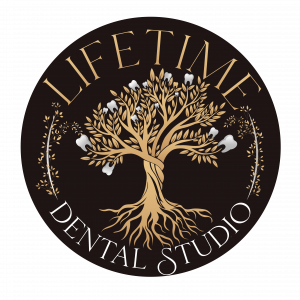Composite Bonding Sevenoaks, Kent
- Request An Appointment
- 01732 600 243
- The Auction House, Argyle Road, Sevenoaks,TN13 1HJ
A pearly smile is an inevitable ingredient for achieving success in your personal and professional life. When you smile broadly, you feel more confident, and confidence lets you meet life’s challenges more effectively.
Even if your natural teeth are far from ideal, there is no reason to restrain your ambitions. Cosmetic bonding/composite bonding can help you restore cracked and decayed teeth, as well as hide gaps between teeth painlessly and effortlessly. Lifetime dental studio offers the best cosmetic teeth bonding treatments that provide patients with successful attachments between the filling material and the tooth’s original enamel and dentin.

What is Dental Bonding?
Dental bonding is a leading cosmetic procedure that is full of restorative benefits. Using composite resins, Dr Natalya and her team of professional dentists can repair your chipped front teeth or hide minor, aesthetic defects. Composite resins for bonding cracked teeth stick with your teeth changing shape.
Direct composite bonding is used to recreate a smile in an additive manner. Little or no tooth reduction is needed. In the hands of a skilled operator, direct bonding is less costly than porcelain veneers and crowns and can be long-lasting with proper maintenance.
Who is a Good Candidate for Tooth Bonding?
Bonding is one of the perfect solutions for treating minor cosmetic flaws. At your preliminary consultation, you will see precisely how dental bonding applies to you. Candidates for this procedure usually have good oral health. Still, their smile needs corrections because teeth are chipped, discoloured, crooked, gapped, or misaligned.
Patients can opt for transitional bonding that is used for anything from a mock-up to full-mouth rehabilitation. The transitional bonding allows the patients to transition into more permanent dentistry as they can afford.
Dental bonding is particularly effective in children and teenagers. Their teeth are not matured yet, so more permanent methods of dental treatment are not recommended. It is also helpful for people who wear braces, which usually lead to new gaps and crowding.
Advantages of Dental Bonding
Dental bonding has many other benefits that help improve our patients’ health:
- Cosmetic bonding is a patient-friendly procedure that can be recommended for children, youth, and adults.
- The procedure can help to prevent most dental issues at the earliest stage.
- Tooth bonding costs can be several times less than other dental procedures, like dental surgery.
- Bonding is painless, so there is no need to use anaesthesia.
- Your tooth is polished only in the area where resins are applied. Composite resins are laid directly on your tooth, so laboratory customising is not necessary.
- Bonding materials have the same colour as your tooth, so your restored teeth will look natural.
- The procedure can restore your smile in just one visit.
Material
Composite resins are a durable blend of glass and plastic, applicable for restoring the shape of teeth and avoiding further loss of your tooth. Suppose you have such problems as sensitive root canals, worn or fractured teeth. In that case, however, our dentists in Sevenoaks may offer to use bonded porcelains instead.
Composite resins have the shape of your natural tooth. They can adhere by actually bonding the dentin and enamel of the tooth.
The proper material allows for the preservation of as much healthy tooth structure as possible. Unlike porcelain, composite resins do not need laboratory fabrication, so your tooth restoration can be finished by our experienced dentists in one appointment.
Dental Bonding Procedure
Cosmetic bonding processes usually last no longer than an hour unless you want to restore more than one tooth at a time. During your appointment with Dr Natalya you will undergo the following steps:
- Consultation – before starting the procedure, our dentists will find the best-suited shade of bonding materials. These should be of the same colour as your current teeth. If your smile needs whitening, it is better to whiten before bonding. Otherwise, the cosmetic resins will have a different colour from your natural teeth.
- Preparation – the restoring tooth will be isolated with special dental strips that don’t permit the resin to bond with adjacent teeth. Then, your dentist will etch the tooth surface with a particular acid solution to make it rough enough to start the procedure. To increase resin adherence, the tooth will also be cleaned with a conditioning liquid, providing the highest standards in dental care.
- Bonding – once the preparation is complete, some bonding material will be put onto your tooth using a professional dental tool. Then, the material will be molded and shaped to create an ideal form of your tooth. It may be necessary to apply several layers of the composite resin to ensure the best length and thickness.
- Polishing – this phase is vital to create the right shape of the restored tooth. The dental strips will be removed, and the applied material will be polished with a fine dental drill. Polishing is completed only when the bonding material looks like a natural part of your tooth.
Tooth bonding FAQ:
For what conditions is dental bonding considered?
Dental bonding is an option that can be considered to:
- Repair decayed teeth (composite resins are used to fill cavities)
- Repair chipped or cracked teeth
- Improve the appearance of discoloured teeth
- Close spaces between teeth
- Make teeth look longer
- Change the shape of teeth
- Use as a cosmetic alternative to amalgam fillings
- Protect a portion of the tooth’s root that has been exposed when gums recede
What is the procedure for having a tooth bonded?
- Preparation. Little advance preparation is needed for dental bonding. Anaesthesia is often not necessary unless the bonding is being used to fill a decayed tooth. Your dentist will use a shade guide to select a composite resin colour that will closely match the colour of your tooth.
- The bonding process. Next, the surface of the tooth will be roughened, and a conditioning liquid applied. These procedures help the bonding material adhere to the tooth. The tooth-coloured, putty-like resin is then applied, molded, and smoothed to the desired shape. An ultraviolet light or laser is then used to harden the material. After the material is hardened, your dentist will further trim and shape it and polish it to match the sheen of the rest of the tooth surface.
- Time to completion. Dental bonding takes about 30 to 60 minutes per tooth to complete.
What are the advantages and disadvantages of dental bonding?
Dental bonding is among the easiest and least expensive cosmetic dental procedures. Unlike veneers and crowns, which are customised tooth coverings that must be manufactured in a laboratory, bonding usually can be done in one clinic visit unless several teeth are involved. Another advantage, compared with veneers and crowns, is that the least amount of tooth enamel is removed. Also, unless dental bonding is being performed to fill a cavity, anaesthesia is usually not required.
Because of some of the limitations of dental bonding, some dentists view it as best suited for small cosmetic changes, temporary correction of cosmetic defects, and correction of teeth in areas of shallow bite pressure (for example, front teeth). Consult with your dentist about the best cosmetic approach for your particular problem.
Contact Dr Natalya and the Lifetime dental studio’s staff or click here to schedule a consultation online for more information about Cosmetic Tooth Bonding.

